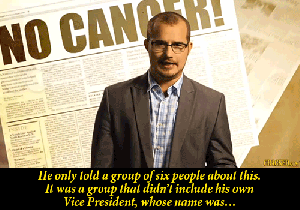Staying current and relevant will be one of the biggest and most constant hurdles for historians in the digital age. As we saw this week, many online exhibits are quickly become antiquated to the point of obsolescence.

The Valley of the Shadow site boast one of the earliest copyrighted online exhibits, begun in 1997, but the way we experience the internet has changed vastly since even the most recent date given, 2007. Websites need to be navigable, sharable, and interactive. The Valley of the Shadow offers none of these amenities. When exploring the site, it is easy to become lost in the many rooms and chambers. The site is searchable, but not easily. There is a no search bar on the first page, only if you first click into a room. If you were not sure of the exact date of what you were searching for, this would be a frustrating task, searching all three rooms. Some rooms are only accessible if you know what you are looking for already. The images warn that the full size pictures may take “several minutes” to load. Today, they appear instantly, proving once again that the site is many years outdated. While of course, you can copy the link in the address bar and paste it in an email or your Facebook status bar or download a browser plugin for sharing, websites today can make this easier by putting social media buttons on every page. Lastly, the Valley of the Shadow is distinctly missing a comments section anywhere on the site. This truly makes the sire feel dated. Where are the historians discussing battle maps with passion, comparing each other to Hitler?

Another struggle for the modern historian entering the digital plane is the desire to define Digital History. The problem with this discussion is that historians are focusing on the medium, rather than the material. If you are utilizing digitization methods to experience history, you are participating in Digital History. The focus should be on the content and its accessibility rather than if it fits all possible definitions of Digital History. Some historians expressed this feeling, such as Amanda French is the Debates in the Digital Humanities, who when asked to define Digital History responded, “I don’t: I’m sick of trying to define it. When forced to, I’ll make the referent to the people instead of the ideas or methods–Digital Humanities is the thing practiced by people who self-identify as Digital Humanists.” However, many historians are bogged down by the desire to define Digital History.
I hope that historians will settle into the digital era and become more community-based. The more materials that are available and easily accessible online, the more opportunities everyone will have to learn.
Lastly, I will leave you with some images from Cracked.com editor’s recent video, 4 U.S Presidents Who Put Action Movies to Shame. I’m putting this up and linking to the video because I want to know how everyone feels about history being presented in this manner. Obviously it’s not aimed at an academic audience. Cracked.com is a humor website. But 97,472 people have watched this 8 minute video about presidents. Dan O’brien who wrote and narrated the video has written a book about U.S. presidents and his articles and videos are well researched. I just wanted to find out everyone’s thoughts on more pop cultural presentations of history.





I think that Dan O’Brien’s mention of a catchy title being important is HUGE! People are bombarded with visual media all day and often make decisions on which media they choose to view in less than ten words. I would also like to point out how recent that video came out, September 22nd, 2014, wow!! I also liked that you brought up historians becoming more community based, it seems plausible that Dan O’Brien didn’t write, edit, produce, direct, create all of the graphics, and background music by himself for that video. I believe that is key in becoming a successful Digital Historian, however we define that!
LikeLiked by 1 person
I agree with your sentiment on defining digital history. The readings seem to reiterate over and over the need to define. It was repetitive and a waste of time. Because digital history or as I prefer history in a digital format, is just a tool. The basic tools of research and interpretation of evidence are still fundamentally the same for the historian. The only that has changed for the historian is the way their research is presented. Instead of the straightforward and linear paper you now have a non-linear, multi-sensory format.
LikeLike
I like the term History in a Digital Format. You should trademark it!
LikeLike
While our reading suggests many struggles faced by Digital History. The biggest one is clearly making historical information understandable, accessible, and appealing to the online world. The online world demands the digital historian to provide qualitative and quantitative work to the academic historian, the interested onlooker, or even the high schooler being forced into a historical research project.
I couldn’t agree more with your critique of The Valley of the Shadow project. It isn’t easy to get usable information unless you really know what you are looking for. This is part of the innovative thinking digital history requires.
Part of this innovative thinking not only requires a historical imagination, but it also requires knowledge of computers, the web, and technology to some degree. Your use of cracked.com exemplifies this.
LikeLike